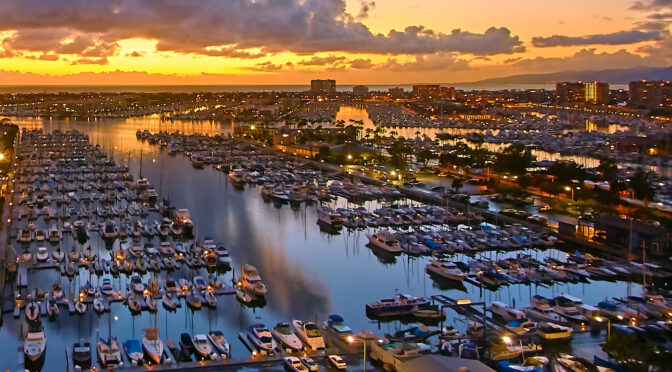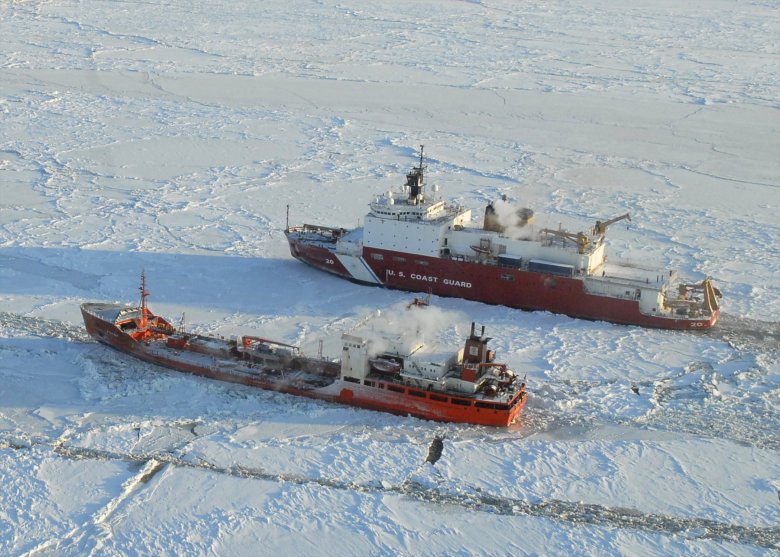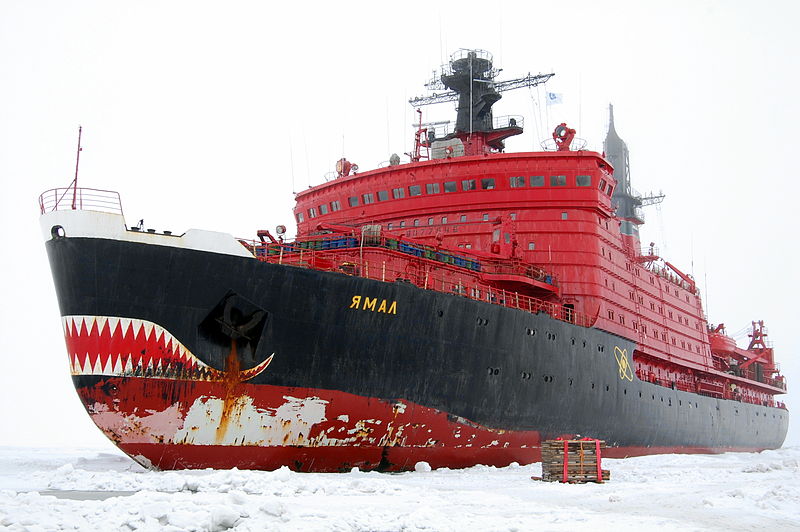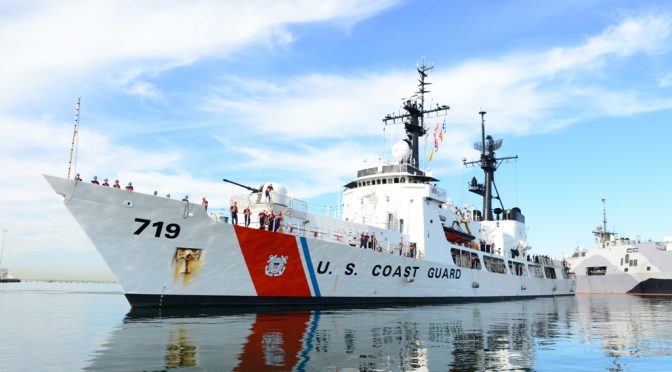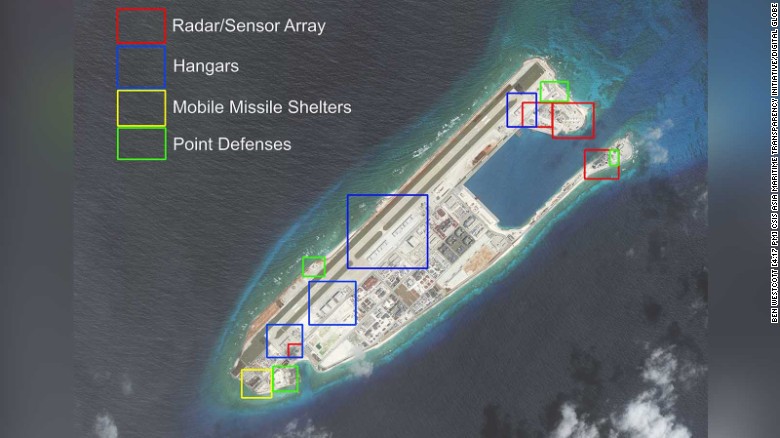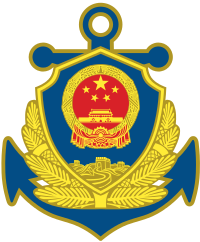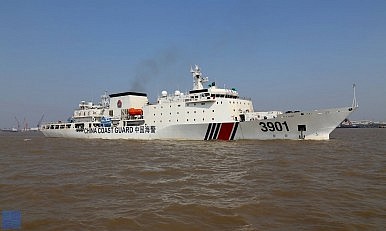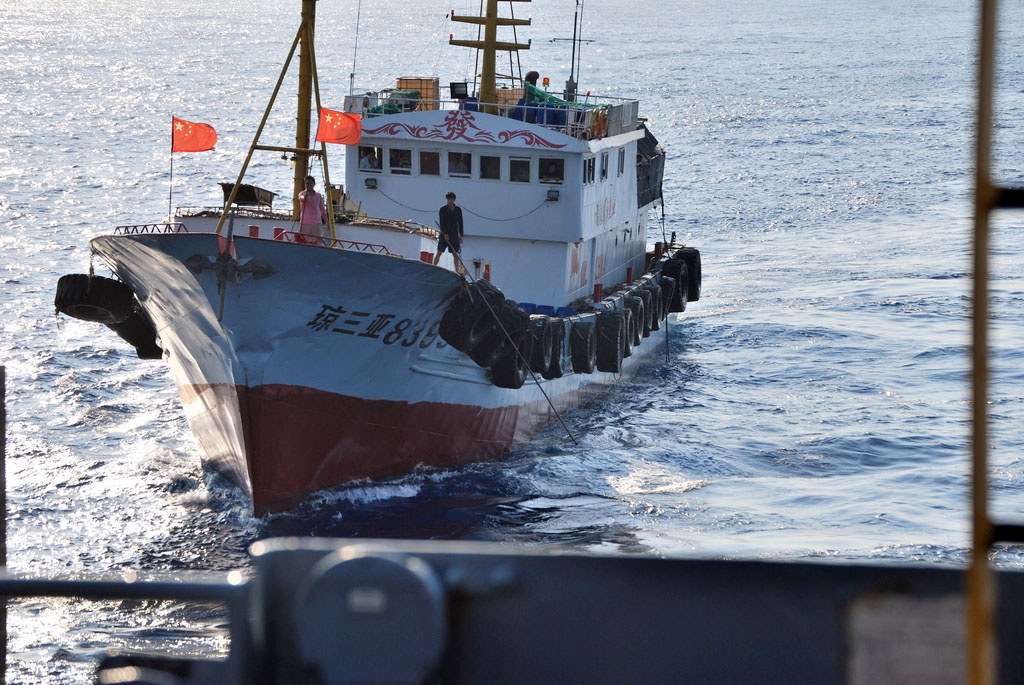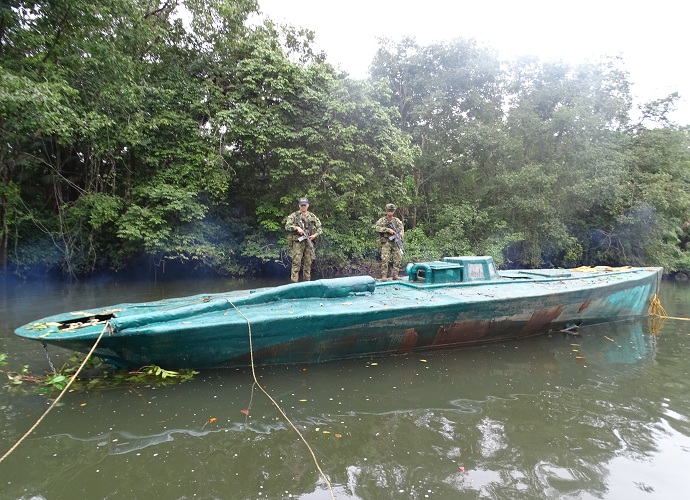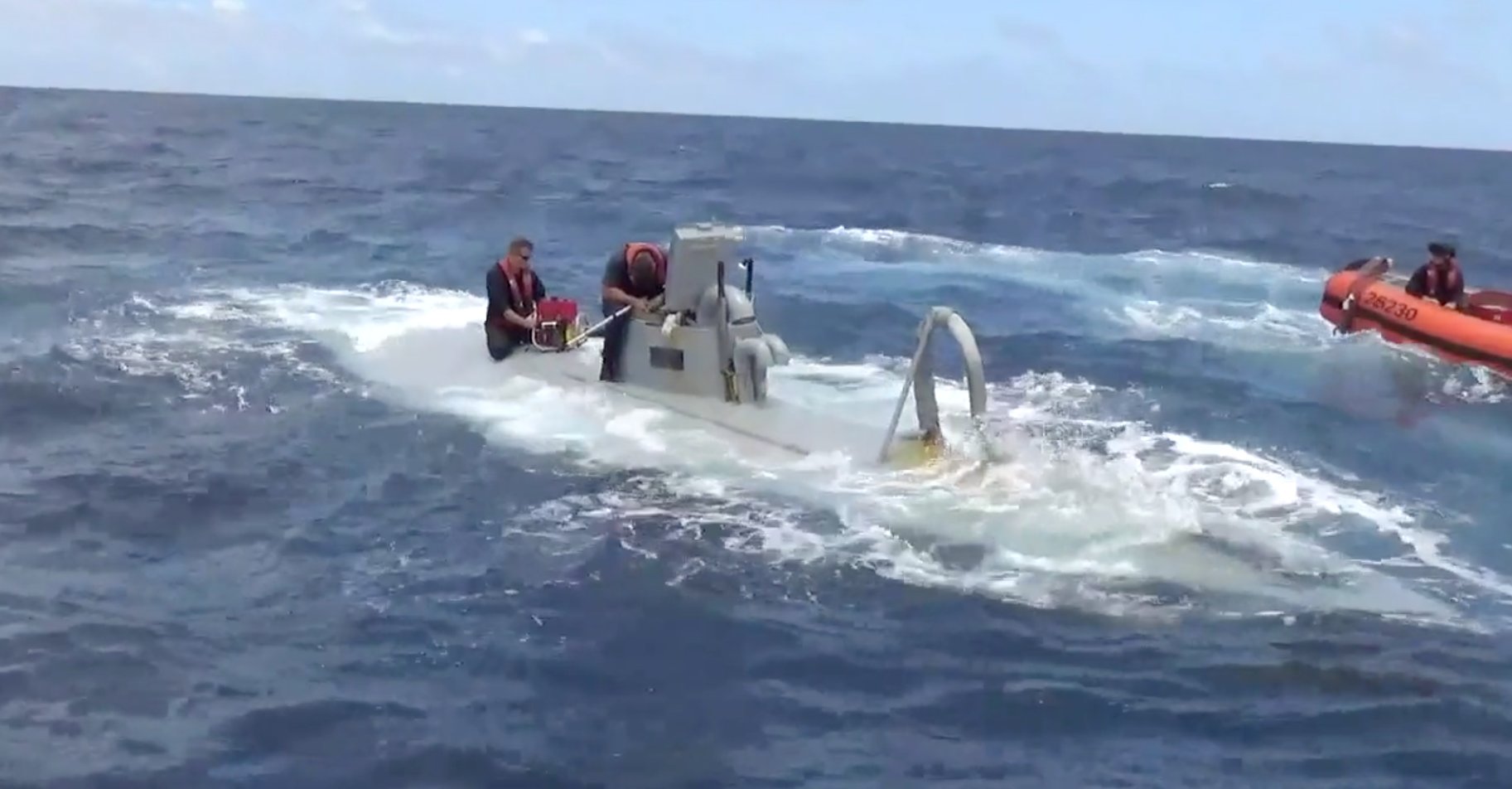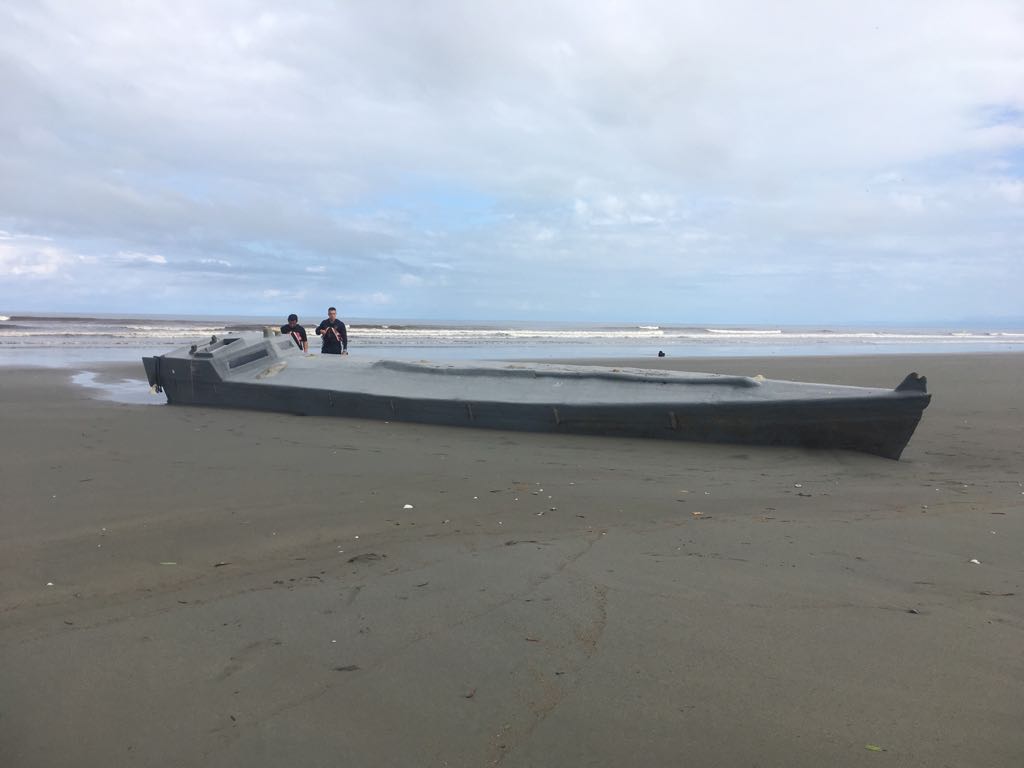By Jasper Campbell
Introduction
Much has been made about the threat of the People’s Armed Forces Maritime Militia (PAFMM) and its contributions to the burgeoning People’s Republic of China (PRC) maritime enterprise. However, the United States has an equally deep bench of maritime capacity in its troves of commercial and recreational mariners. The U.S. recreational boating community infamously entered the international zeitgeist ahead of the 2020 U.S. Presidential elections with the so-called “Trump Boat Parades.” In South Florida, hundreds of privately-owned civilian boats transited the Intracoastal Waterway to show their support for the one-time President. Similar protests in the Great Lakes and California followed suit. Many saw these demonstrations as political rancor manifest, however they illustrate latent maritime power within the United States. As the geopolitical tensions in the Indo-Pacific region coalesce into a fully-fledged maritime flashpoint, maritime capability across the conflict spectrum is exactly what the United States needs.
While the suggestion that 30-ft recreational center consoles with price tags upwards of a half-million dollars would form maritime militias might seem ridiculous, there is well-trodden historical precedent. There are myriad suitable missions suitable in a conflict or near conflict for such a force. Missions could range from the conventional: intelligence gathering or the insertion of special operations forces, to the novel: anti-submarine warfare (ASW) or even electronic warfare (EW). In South Florida, where many of these capable recreational and commercial mariners have extensive experience navigating the labyrinthine cays and reefs that comprise the Bahamian archipelago (just 50 miles away from the United States), the littorals of the Indo-Pacific would be familiar territory.
Thanks to the flexible statutory constraints of the U.S. Coast Guard Auxiliary and the surprisingly low threshold of converting commercial and private ships to armed combatants, it is clear is that with minimal effort, the United States can tap into a significant reservoir of maritime competence and capital to bring to bear in the Indo-Pacific. This piece is not intended to be prescriptive, but rather, in light of the prolific activities of the PAFMM in the South China Sea highlight that there is historical precedent for mobilizing its own unconventional maritime auxiliaries and highlight areas where such a force could be useful in the Indo-Pacific.
Historical Precedent
History is replete with examples of incorporating civilian vessels into naval operations from the celebrated to the obscure. Famously, in World War II during the evacuation at Dunkirk, thousands of “little ships” were called to action to evacuate Allied forces from the jaws of the Nazi war machine in continental Europe. Less prolific, but equally as substantive, the “Shetland Bus” saw Norwegian fisherman employed as smugglers for vital materiel from Scotland to Norway to aid resistance there throughout WWII.
At the same time across the Atlantic, writer Ernest Hemingway added another chapter to his larger-than-life persona by hunting German U-boats in the Straits of Florida from his custom sport fishing boat, Pilar. Armed with a radio, several rifles, and home-made depth charges, Hemingway trolled the Straits of Florida ostensibly fishing, while on the prowl for U-Boats.
This phenomenon extended to the rich, as well as the famous. In 1938, Vincent Astor used his 263-foot yacht, Nourmahal, to scout the Japanese defenses of the Marshall Islands under the guise of an oceanic expedition. He wrote a detailed report on yacht stationary and dispatched it to the White House to his friend President Roosevelt. By this time, President Roosevelt was no stranger to cloak and dagger activities by civilian mariners. At the precipice of American involvement in World War I, then Assistant Secretary of the Navy Roosevelt undertook a quiet campaign “procure seagoing yachts for immediate war duty.” He sought to convince his well-heeled New York society peers and was by all accounts successful; 90 members of the New York Yacht Club donated their yachts to the U.S. and British Royal Navy.
During the Falklands War, several United Kingdom commercial fishing trawlers were hastily converted to makeshift minesweepers under “Ships Taken Up From Trade” or STUFT. STUFT was the legal mechanism used by the Admiralty to acquire British flagged ships for government use during the conflict to move men, materiel, and stores. From luxury liners converted to troop carriers to fishing trawlers converted to sub-hunters, 47 British commercial vessels were activated at the behest of the First Sea Lord Admiral Sir Henry Leach who stated, “Man and support the Fleet. Money is no object.”
Modern Applications
There are numerous missions that a maritime militia force would be able to “plug in” and add instant value across the conflict spectrum. As luxury civilian small craft were once made with low-signature wood, today’s fiberglass vessels are also small and have a low-signature compared to most metal military vessels. By adding a simple towed array − especially the new generation of compact lightweight arrays like the thin line towed arrays − a civilian vessel could be leveraged as a remote sensor. Coupled with narcotics smuggling techniques such as tarping during daylight hours, maritime militia forces could be highly distributed, hard to find, and extremely useful, especially in a high-end conflict where a premium will be placed on capital assets.
Additionally, the low profiles, high maneuverability, and shallow drafts make militia forces well suited for special forces work. Here, vessels might be used to insert special forces with little to no modifications. While there are existing special forces delivery platforms that are meant to be clandestine, they tend to be overwhelmingly expensive. For a fraction of the budget, relatively low-profile fiberglass civilian vessels could undertake similar missions.
In addition to more “traditional” uses of maritime militia forces, the advent of surveillance and electronic warfare technology is an area where militia forces might also excel. With minimal “missionizing,” by adding small but robust sensor packages, these small platforms could be a boon to intelligence, surveillance, and reconnaissance (ISR) work. Additionally, as electronic warfare grows more ubiquitous, the size of equipment is decreasing substantially, which may allow smaller platforms to perform similar missions, distributing risk and capability across less visible assets. Adding electronic warfare suites to small militia craft would be a game-changer when considered in concert with their ability to blend in in the “gray zone,” where they could deliver decisive blows to critical enemy systems. While militia forces may not directly match local small vessel traffic, by virtue of their size, they would blend in with the mass of smaller vessels in hot spots such as the Strait of Malacca. One need only consider the density of maritime traffic U.S. ships must navigate in the Indo-Pacific to appreciate the costs U.S. maritime militia assets could levy were they properly outfitted with offensive electronic warfare and ISR equipment.
The current Commandant of the Marine Corps, General David H. Berger, has presided over transformational changes to the U.S. Marine Corps operating model since his tenure began in 2019. He has a knack for making headlines every time he gives an interview or speech due to his penchant for innovation. One of the particularly interesting comments he made within the context of his signature “Expeditionary Advanced Basing Operations (EABO)” concept and the geography of the Indo-Pacific, was the need for “our forces to forage.” This notion has not been explored deeply, but a U.S. maritime militia force could present an interesting intersection with EABO. Theoretically, maritime militia forces would be drawn from highly competent civilian and commercial fishermen. They could act as “fleet foragers,” leveraging their existing fishing prowess to succor both stand-in forces or larger elements in the fleet. They could fish while simultaneously conducting sensor reliant reconnaissance or ASW missions, affording them a credible cover for plying the waters of the Indo-Pacific than as conspicuous combatants.
A Ready-Made Solution
Fortunately, the legal underpinnings for galvanizing a flexible volunteer maritime force capable of operating in distant waters and executing low-end missions in concert with the broader U.S. joint force are readily found in U.S. Code Article 14 Section 3902:
(a)In General. — The purpose of the Auxiliary is to assist the Coast Guard as authorized by the Commandant, in performing any Coast Guard function, power, duty, role, mission, or operation authorized by law.
(b)Limitation. —The Auxiliary may conduct a patrol of a waterway, or a portion thereof, only if—
(1) the Commandant has determined such waterway, or portion thereof, is navigable for purposes of the jurisdiction of the Coast Guard; or
(2) a State or other proper authority has requested such patrol pursuant to section 701 of this title or section 13109 of title 46.
While the Coast Guard Auxiliary is currently limited in its range of Commandant-approved missions and functions, its underlying authorities essentially allow it to mirror the capability of its Active Duty and Reserve counterparts, given the right training and resources. In short, a combatant or theater commander need but ask the Commandant of the Coast Guard, and the basic legal authorities and organizational structures already exist to quickly develop an operational maritime militia. Notably, this maritime militia would be capable of performing any Coast Guard function wherever operations were authorized by law.
The requirements for operating under a flag as a combatant are by no means beyond the administrative capability of any private citizen. Convention VII of the 1907 Hague Conference articulates six-point criteria for any private or merchant ship to serve as a flagged warship:
Article 1 – The converted ship must be placed under direct authority of the Flag State it represents.
Article 2 – The converted ship must bear the distinguishing marks of a warship.
Article 3 – The ship’s commander must be duly commissioned in service to the state and listed among fighting fleet officers.
Article 4 – Crew members must be subject to military discipline.
Article 5 – Ship operations must follow the laws and customs of war.
Article 6 – Belligerents must announce ship conversions in their official list of warships as soon as possible.
In the event of a crisis, these criteria, alongside the statutory authorities granted to the auxiliary by Federal Code, could streamline the conversion of any number of private vessel types for use by the United States. Current strategic guidance indicates that the 23,500-member auxiliary prioritizes the augmentation of under-served administrative and operational roles, such as operational boating safety, incident management, and cyber.
Despite this inherently domestic maritime focus, these forces could be readily augmented and redirected such that the Coast Guard Auxiliary could serve as a “break glass” maritime militia force. If prepared in advance, operational plans and administrative procedures would smooth the transition for operational forces that are ready to “plug in” to a joint task force or fleet architecture. Central to this, the important infrastructure – vessels, manpower, and most importantly, statutory authority to do so, are all prepared.
Wrap-Up
Obviously, a proposal for a maritime militia is likely to have numerous objections, chief among them:
- Why would the United States back such a fanciful proposal when there are plenty of maritime roles and responsibilities that will need filling in the advent of war?
- Enemy combatant implications: Forces may be labeled as enemy combatants outright and therefore risk immediate destruction or capture.
Despite outward appearances, the historical record of using militia forces cleanly converges with modern needs in the Indo-Pacific region. To the first point, though there will undoubtedly be a need for maritime expertise in the advent of a conflict, the program outlined here would represent respectable savings in both time and money. A maritime militia force would leverage the existing expertise of patriotic mariners where they are, instead of forcing them into existing pipelines and structures, which would both cost money and take time. Essentially, they could function as a “ready-made” maritime force capable of filling gaps in the lower end of the conflict spectrum, which seems prescient, given the scheduled decommissioning of small surface combatants in the U.S. Navy.
To the second point, the designation of a maritime militia as enemy combatants is a possibility, though hard to gauge without understanding the character of the conflict. It is unlikely that an association with troop foraging would keep them out of the fight completely. However, if U.S. maritime militia forces were targeted, the People’s Republic of China assumes significant risk. Proportional responses will instantly place a target on their vast distant water fishing fleets and their less innocuous PAFMM. The decimation of their fishing fleet would exert intense pressure on the Chinese homeland which already struggles to meet growing protein demands, in conjunction with other domestic maladies.
Perhaps the counter to “why on earth would the United States undertake such a program?” is why would the United States not undertake such a program? Not making modest investments in such a program creates two significant risks. First, China is using their PAFMM to distinct advantage in gray zone operations. By neglecting to form similar capabilities, the U.S. loses the opportunity to meet PAFMM efforts and effects proportionally. Second, there are currently nearly twelve-million recreational motor vessels registered in the United States. While only a fraction of those vessels may be functionally useful within the envisioned context, if the robust size and capability of the U.S. Coast Guard Auxiliary is any indication, many hundreds, if not thousands of capable, motivated mariners and vessels could be rapidly acquired and fielded.
A U.S. maritime militia force in the Indo-Pacific will not win a war outright, but it does offer the low-cost ability to impact the balance of power at sea. As storm clouds brew in the Indo-Pacific and long-term planning within the U.S. defense establishment continues to be fraught, low cost, high yield maritime capacity of any stripe should not be left on the table.
Jasper Campbell served on active duty for six years in the afloat and C5I communities. He is the cofounder of simplevideo.io, a technology company that offers solutions for public safety and healthcare markets. He holds a bachelor’s degree in electrical engineering from the U.S. Coast Guard Academy.
Featured Image: Marina del Rey, California. (Photo by Pedro Szekely via Flickr.)

